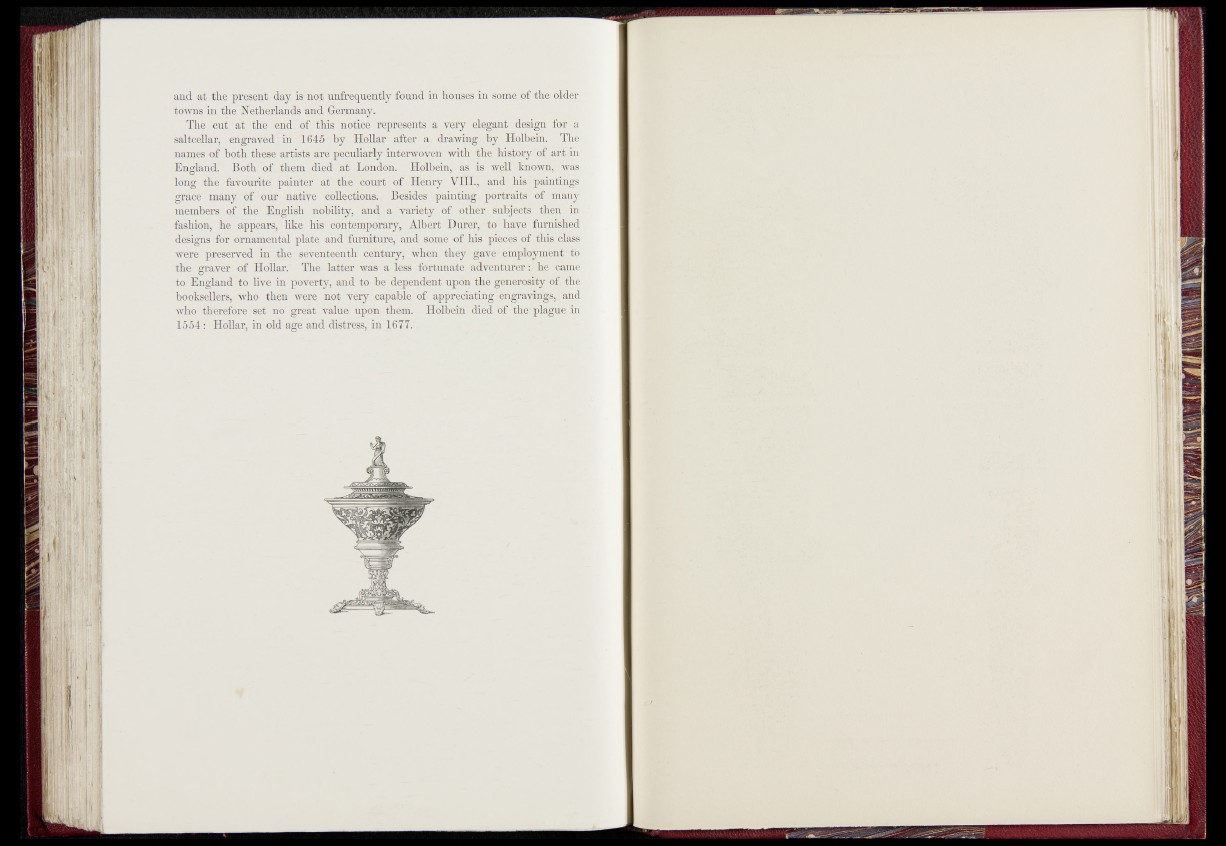
and at the present day is not unfrequently found in houses in some of the older
towns in the Netherlands and Germany.
The cut at the end of this notice represents a very elegant design for a
saltcellar, engraved in 1645 by Hollar after a drawing by -Hplbein. The
names of both these artists are peculiarly interwoven with the history of art in
England. Both of them died at London. Holbein, as is well known, was
long the t favourite painter at the court of Henry' VIII., and his paintings
grace many of our native collections.: Besides painting portraits of many
members of the English nobility, and a variety of. other subjectss, then in
fashion, he appears, like his contemporary, Albert Durer, to have furnished
designs for ornamental plate and furniture, and some of his pieces of this class
were preserved in the seventeenth century, when they gave - employment'?'®)
the graver of Hollar. The latter was a less fortunate adventurer name
to England to live in poverty, send to be dependent upon the generosity nfrjhe
booksellers, who then were not very capable of appreciating engravings, and
who therefore set no great value upon them. Holbein died of. the? plague in
1554: Hollar, in old age and distress, in 167-7. -